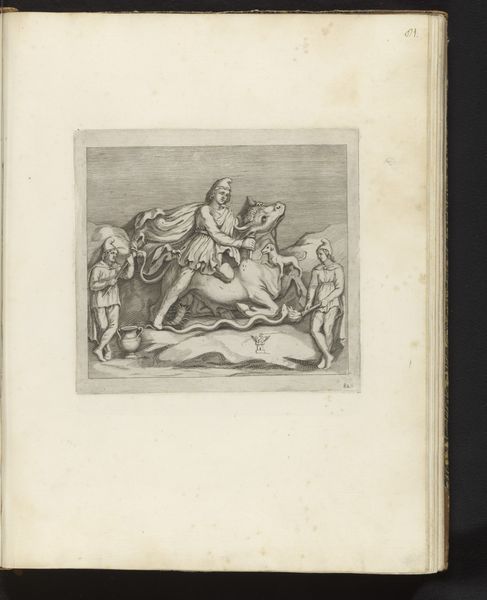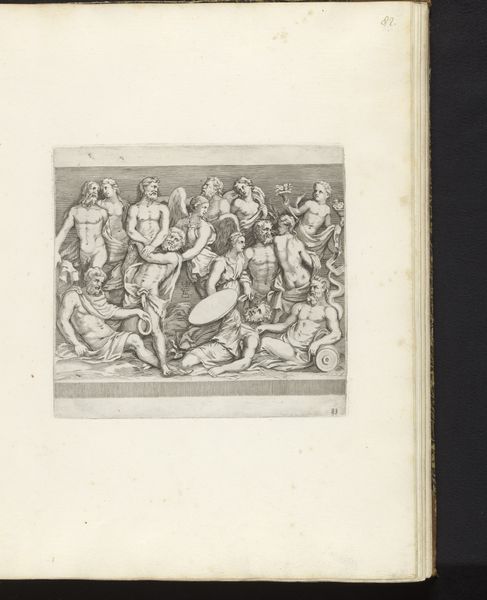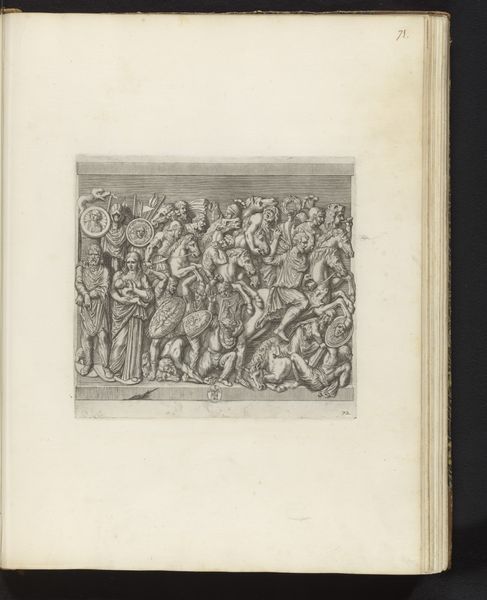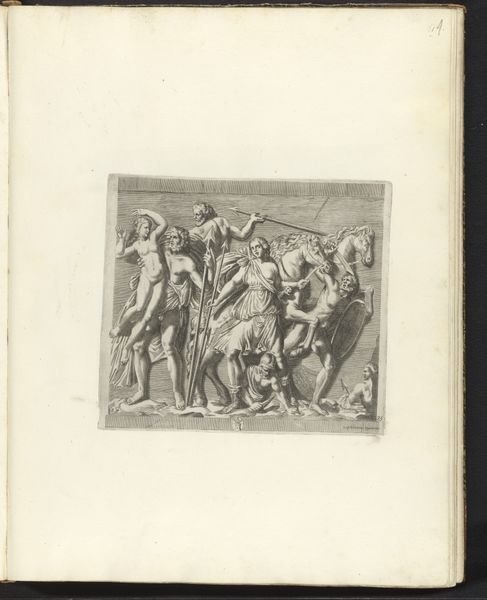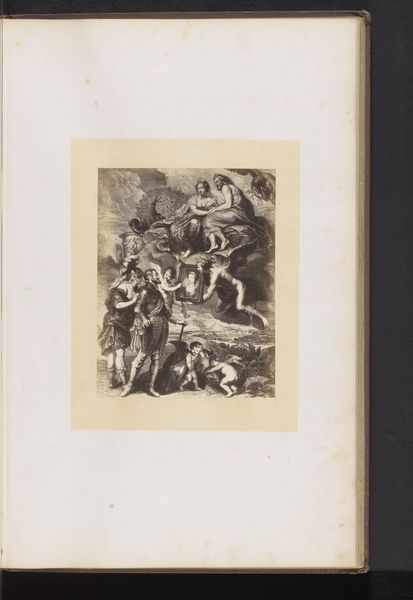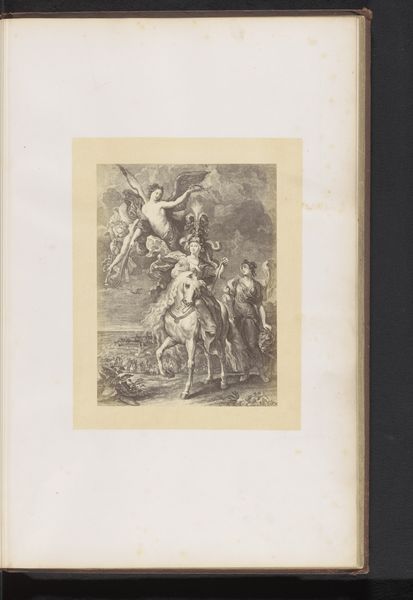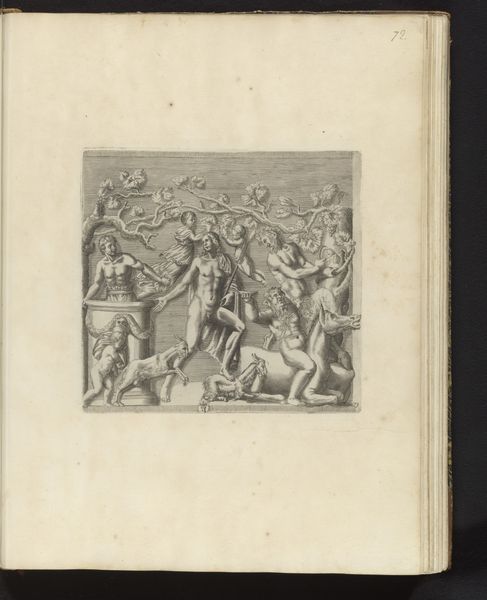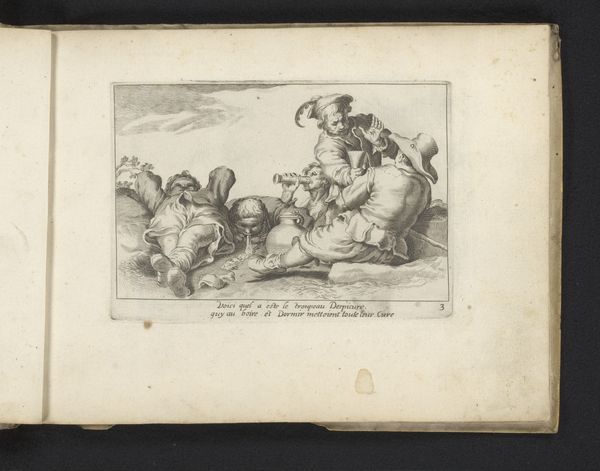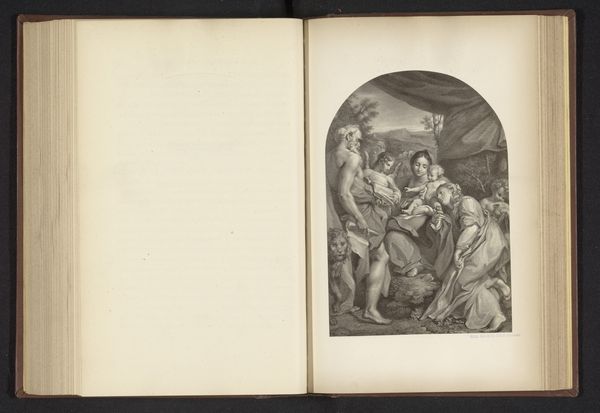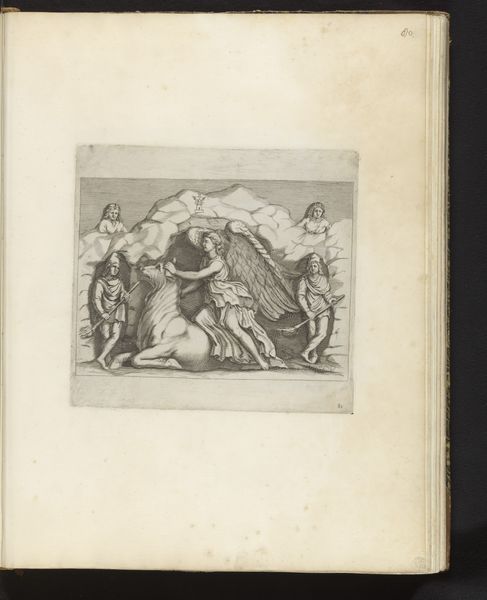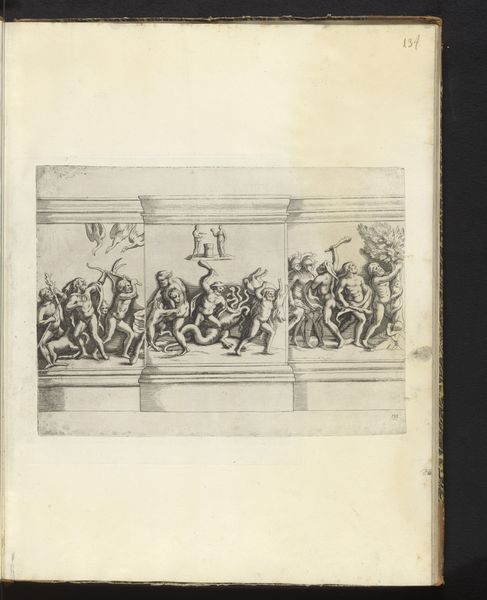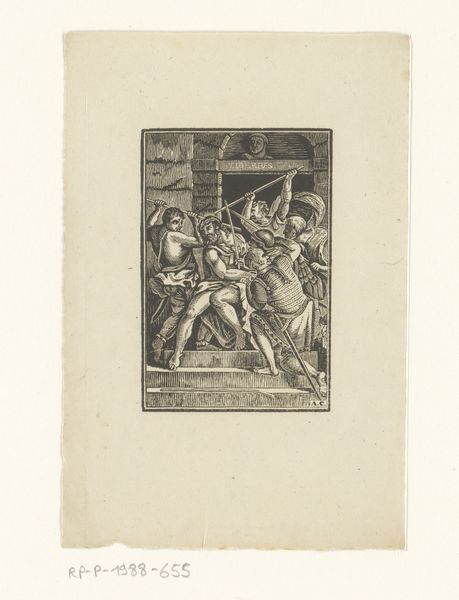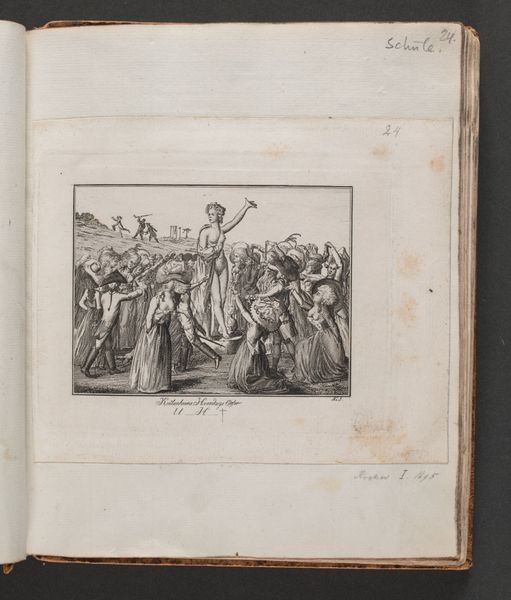
Bas-reliëf met een dronken sater en de kop van een leeuw 1636 - 1647
0:00
0:00
print, engraving
#
baroque
# print
#
figuration
#
history-painting
#
engraving
Dimensions: height 201 mm, width 237 mm
Copyright: Rijks Museum: Open Domain
Editor: Here we have “Bas-relief met een dronken sater en de kop van een leeuw,” or "Bas-relief with a drunken satyr and the head of a lion" an engraving made between 1636 and 1647. The composition strikes me; all the figures seem crammed together within the frame, a jumble of bodies. How do you interpret this work? Curator: Notice how the artist has used line. See the density of marks to create shadow, particularly in the lion's mane and around the figures. This manipulation creates a striking contrast, dividing the composition into visually distinct masses. Observe how the arrangement pulls your eye toward certain focal points within the tumultuous scene. Do you see how that reclining figure anchors the movement? Editor: Yes, she creates a horizontal that stops the chaos of the figures surrounding the lion. The draping over her is gorgeous, with incredibly rendered folds. Curator: Precisely! The draping is quite important for balance and leading the eye. And consider the interplay between the static quality of the lion’s head and the active poses of the satyrs. It contributes to a sense of controlled dynamism, doesn't it? How the very structured lion image is disrupted by the actions of the Satyrs and other mythological figures Editor: Absolutely. The tension between stillness and movement gives the image energy, a kind of contained explosion. It makes me wonder what’s about to happen! Thank you! I’ve never thought about how movement could be still structured. Curator: Considering this framework lets us investigate further prints, while analyzing each image for their formalist strategies in creating movement.
Comments
No comments
Be the first to comment and join the conversation on the ultimate creative platform.
